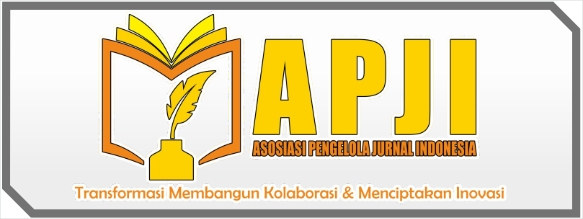Assessing the Implementation of Social Security Program for Tobacco Farmers in Jember Regency
DOI:
https://doi.org/10.62394/scientia.v3i1.100Keywords:
social security programs, tobacco farm workers, implementation, participation, governmentAbstract
This research delves into the implementation of social security programs, particularly focusing on tobacco farm workers in Jember regency, Indonesia. Despite the mandatory nature of the BPJS Ketenagakerjaan, many tobacco farm laborers remain uncovered, posing risks to their social and economic well-being. Utilizing a quantitative research methodology, the study employs questionnaires and statistical analysis to understand the factors influencing participation in the BPJS Employment program. Findings reveal that variables such as Program Urgency, Farmers' Knowledge, Program Benefits, Farmers' Expectations, and the Role of Local Government collectively explain 67.5% of tobacco farmers' participation. Notably, Program Urgency and Program Benefits significantly impact participation, highlighting the vital role of social security in providing financial assurance against job-related risks. Moreover, active involvement of the Local Government is essential in fostering farmers' interest and engagement in the program. These findings underscore the significance of social security programs for tobacco farm workers, emphasizing the need for government support and facilitation to enhance program participation and ensure the welfare of vulnerable laborers.
Downloads
References
Ahmad, E., Drèze, J., Hills, J., & Sen, A. (1991). Social security in developing countries. Oxford University Press Oxford.
Anifalaje, K. (2016). Emerging Trends in the Regulation of Social Security. JMCL, 43, 1.
Badalivand, M., & Karimian, H. (2021). Evaluating Justice-Oriented Services by the Social Security Organization from the Stakeholders’ Perspective in Tehran. Iranian Sociological Review, 11(2), 15–25.
Barrientos, A. (2016). Justice-based social assistance. Global Social Policy, 16(2), 151–165.
Bonnet, F., Ehmke, E., & Hagemejer, K. (2010). Social security in times of crisis. International Social Security Review, 63(2), 47–70.
Devereux, S., & Sabates-Wheeler, R. (2004). Transformative social protection.
Garland, D. (2014). The welfare state: A fundamental dimension of modern government. European Journal of Sociology/Archives Européennes de Sociologie, 55(3), 327–364.
Guest, D. (1997). The emergence of social security in Canada. ubc press.
Jain, S. (1999). Basic social security in India. Van Ginneken (Ed.), 37–67.
Kalusopa, T., Dicks, R., & Osei-Boateng, C. (2012). Social protection schemes in Africa. Windhoek: African Labour Research Network.
Kannan, K. P. (2004). Social Security, Poverty Reduction and Development. ESS Extension of Social Security Paper, 21.
Kertonegoro, S. (2008). Jaminan Sosial: Prinsip dan Pelaksanaannya di Indonesia. Penerbit Mutiara.
McClure, M. (2013). A civilised community: A history of social security in New Zealand 1898-1998. Auckland University Press.
Organization, W. H. (2000). The world health report 2000: health systems: improving performance. World Health Organization.
Rao, V. M., Rajasekhar, D., & Suchitra, J. Y. (2006). Unorganised Workers: Deprivation, Social Security Needs, Policy Implications. Economic and Political Weekly, 1913–1919.
Ridwan, A. (2022). Analisis Mutu Layanan Kesehatan dalam Perspektif Implementasi JKN di Rumah Sakit Chasan Boesoirie Ternate. SCIENTIA: Journal of Multi Disciplinary Science, 1(1), 1–16.
Robson, W. A. (2022). Social security. Routledge.
Soepomo, I. (2001). Hukum Perburuhan Bidang Hubungan Kerja. Djambatan.
Standing, G. (2017). Basic income: And how we can make it happen. Penguin UK.
Supriatin, F. E., Marliana, I., Sangadji, S. S., Paerah, A. M. K., & Dharta, F. Y. Afkar, & Efroliza.(2022). Buku Ajar Metodologi Penelitian.
Sugiyono. (2010). Metode Penelitian Pendidikan Pendekatan Kuantitatif, kualitatif, dan R&D. Alfabeta.
Vrooman, J. C. (2009). Rules of relief: Institutions of social security, and their impact.
Downloads
Published
How to Cite
Issue
Section
Most read articles by the same author(s)
- Nugrahini Susantinah Wisnujati, Unveiling the Epoch: Exploring Pesticide Utilization and Trade Trends Globally and Regionally from 1990 to 2020 , SCIENTIA: Journal of Multi Disciplinary Science: Vol. 2 No. 2 (2023): July - December
- Vebri Dwi Permana, Markus Patiung, Nugrahini Susantinah Wisnujati, A Comprehensive Analysis of Indonesia's Coffee Exports to the Global Market from 1991 to 2021 , SCIENTIA: Journal of Multi Disciplinary Science: Vol. 3 No. 2 (2024): July-December
- Prama Hasta Aditya Maulana Sudrajat, Nugrahini Susantinah Wisnujati, Hary Sastryawanto, Exploring Consumer Preferences: Attribute Analysis and Satisfaction with Cavendish Bananas , SCIENTIA: Journal of Multi Disciplinary Science: Vol. 3 No. 2 (2024): July-December




















